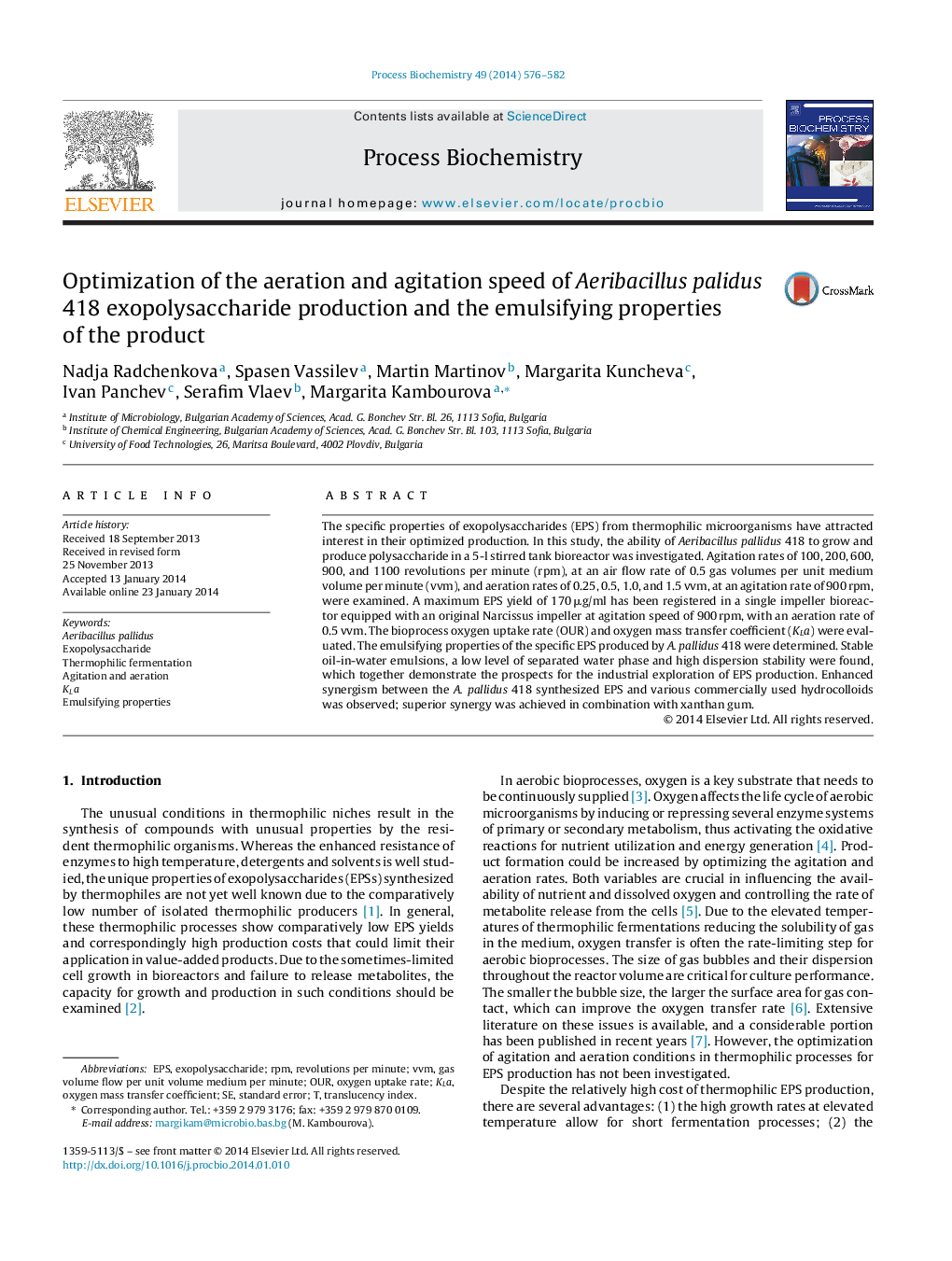| Article ID | Journal | Published Year | Pages | File Type |
|---|---|---|---|---|
| 34702 | Process Biochemistry | 2014 | 7 Pages |
•We optimize the agitation and aeration in EPS production by a thermophilic bacteria.•The growth and EPS production by A. pallidus in a bioreactor is examined.•An agitation-dominated regime for the cell growth and production is observed.•The emulsifying properties of EPS demonstrate the prospects for industrial exploration.
The specific properties of exopolysaccharides (EPS) from thermophilic microorganisms have attracted interest in their optimized production. In this study, the ability of Aeribacillus pallidus 418 to grow and produce polysaccharide in a 5-l stirred tank bioreactor was investigated. Agitation rates of 100, 200, 600, 900, and 1100 revolutions per minute (rpm), at an air flow rate of 0.5 gas volumes per unit medium volume per minute (vvm), and aeration rates of 0.25, 0.5, 1.0, and 1.5 vvm, at an agitation rate of 900 rpm, were examined. A maximum EPS yield of 170 μg/ml has been registered in a single impeller bioreactor equipped with an original Narcissus impeller at agitation speed of 900 rpm, with an aeration rate of 0.5 vvm. The bioprocess oxygen uptake rate (OUR) and oxygen mass transfer coefficient (KLa) were evaluated. The emulsifying properties of the specific EPS produced by A. pallidus 418 were determined. Stable oil-in-water emulsions, a low level of separated water phase and high dispersion stability were found, which together demonstrate the prospects for the industrial exploration of EPS production. Enhanced synergism between the A. pallidus 418 synthesized EPS and various commercially used hydrocolloids was observed; superior synergy was achieved in combination with xanthan gum.
